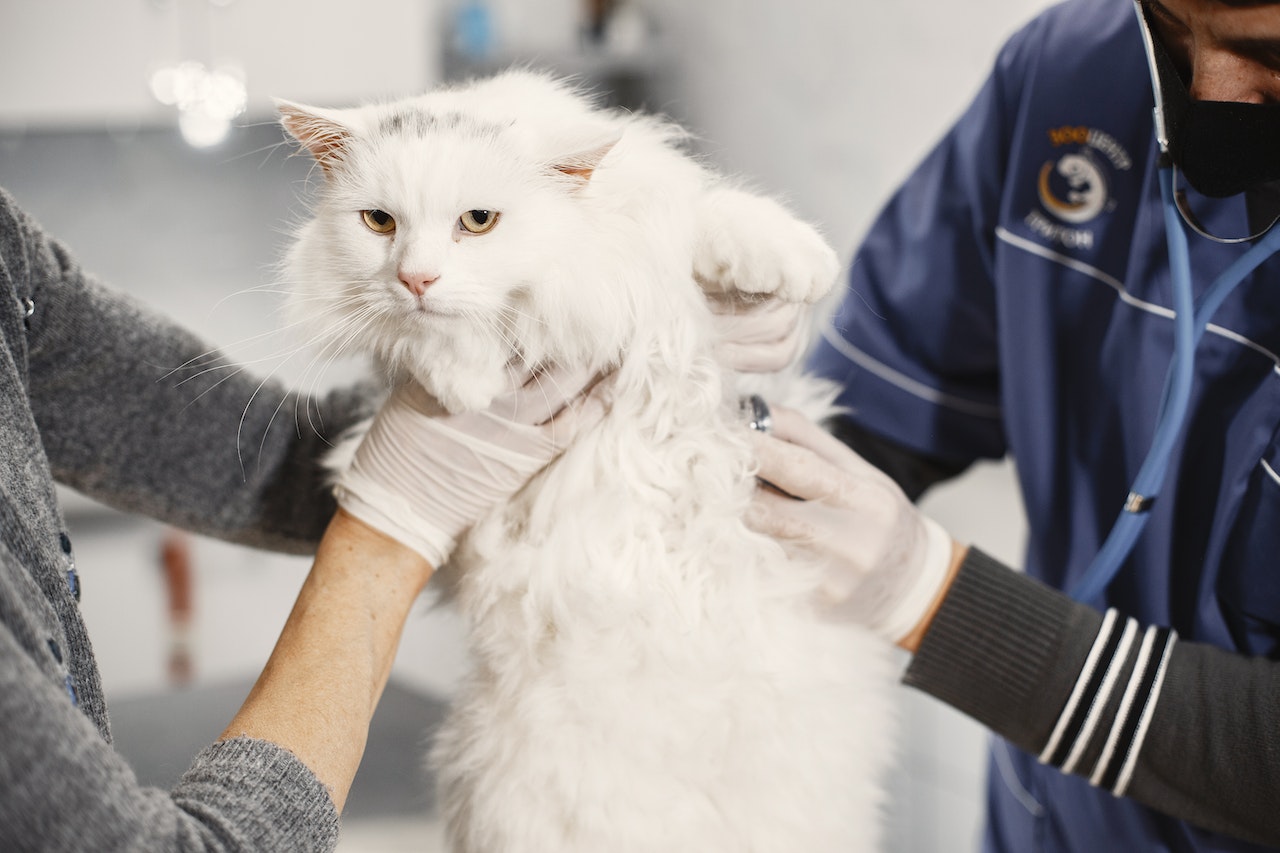First and foremost, let’s get something straight. Cats? Those cute, fluffy, judgmental little creatures that grace our homes and sofas with their presence? They’re royalty. I mean, just ask them. No, wait, don’t — they might just give you the look. You know, that signature “why are you speaking to me, peasant?” glare.
Now that we’ve established their highnesses’ status, let’s talk about keeping them in tip-top shape. And by that, I mean, let’s discuss how often you should bundle up Mr. Whiskers, brave the razor-sharp claws, survive the indignant meows, and transport them to that dreaded place: the vet.
1. Kitten Kaboodle: Their First Year
So, you’ve adopted a tiny furball who, for reasons best known to the feline gods, believes it’s a tiger in a mini-sized body. Congratulations! You’re now the proud owner of a baby ninja that’s as cute as it is deadly. In their first year, kittens should see the vet pretty regularly. Think of it as taking your miniature tiger for a series of playdates with needles (just don’t mention that part to them).
First 6 Months: Ideally, you’re looking at multiple visits. They need vaccinations, de-worming, and health checks. Plus, the vet will want to coo over how adorable they are — because, let’s face it, they really, really are.
Pro Tip: It’s always fun to watch your kitten’s transformation from cuddly lovebug at home to “if looks could kill” at the vet’s office.
2. The (Not So) Terrible Twos: Ages 1-2
After surviving your feline’s infancy, where their energy levels rival that of a caffeinated squirrel, they begin to mellow… slightly. Think of it as moving from “chaotic whirlwind” to “slightly less chaotic whirlwind.”
During this time, your twice-yearly vet visits are like taking your teenager for their check-ups. Sure, they roll their eyes and give you the cold shoulder, but deep down, you know they’re thanking you for ensuring they’re at their prime health. And by thanking, I mean they probably won’t shred your favorite couch… for a day or two.
3. The Regal Adulthood: Ages 3-6
Ah, they’re all grown up now. This is the phase where cats are most likely to look down on us mere mortals (more than they usually do). These few years are when you should take your cat to the vet annually for check-ups.
Why? Because even though they spend 23 hours a day snoozing and one hour pushing stuff off tables, they need a professional to tell them they’re perfect. And also to catch any minor health issues before they become more serious.
4. The Golden Meowments: Ages 7 and Beyond
Now, we venture into the realm of the wise elders: the senior cats. The regal bearing intensifies, the demands for comfy lounging spots rise exponentially, and their tolerance for nonsense? Virtually nonexistent.
In their golden years, cats might develop age-related conditions like arthritis, kidney problems, or a sudden penchant for reminiscing about their kittenhood mischief (okay, maybe not that last one). Hence, increasing the frequency of vet visits is a must.
Regular Checkups: At this stage, every 6 months is ideal. Think of it as taking your aging monarch for their royal health decree, ensuring they continue ruling your household with an iron paw and disdainful glare for years to come.
Pro Tip: Ever noticed that the older the cat, the louder the purr? It’s probably their way of saying, “You’re doing alright, human,” or maybe it’s just the snoring.
5. The “Extras” – Because Cats Are Extraordinary (and Sometimes Just Extra)
Let’s face it, cats, being the divas that they are, might need unscheduled vet visits. Whether it’s because they decided to munch on that mysterious thing off the floor (again) or they’re just not acting like their sassy selves, always trust your gut. If you feel like your cat needs medical attention, don’t wait.
Signs that your cat needs a vet visit:
- Changes in appetite or weight
- Persistent vomiting or diarrhea
- Difficulty breathing or coughing
- Lethargy or weakness
- Sudden aggression or changes in behavior
- Excessive thirst or urination
- Unusual lumps, bumps, or growths
- Persistent itching or scratching
- Lameness or difficulty moving
- Discharge from the eyes, nose, or ears
- Bad breath or drooling
If you notice any of these symptoms in your cat, schedule an appointment with your veterinarian as soon as possible to address the issue and ensure your cat’s health and comfort.
Pro Tip: Cats are masters of hiding when something’s wrong. They’ve perfected the “I’m fine” facade way before us humans did. So, even subtle changes in their behavior can be a big deal.
6. The Royal Departure – Preparing for the Inevitable
Let’s be real for a second. The toughest part of being a cat parent is knowing that one day, you’ll have to say goodbye. Regular vet checkups, especially in their senior years, ensure that their final moments are as comfortable and dignified as their majestic lives.
The Wrap-up (Or The Tail End, If You Will)
In essence, while your cat may think of vet visits as a temporary dethroning, they’re crucial for their well-being. So, gear up, brave the claws, endure the disapproving glares, and whisk them away to the vet. They might not show it, but deep down, in their little furry hearts, they’re grateful. Probably. Maybe. Okay, who are we kidding? They just want more treats.
In the grand saga of cat parenthood, remember this golden rule: A happy cat equals a kingdom (read: home) that thrives. So, go ahead and schedule that vet appointment – and maybe grab some extra treats on the way back.
And there you have it – an amusing yet strangely practical guide on keeping your furball healthy and your sanity (somewhat) intact. Because at the end of the day, every scratch, bite, and “accidental” coffee spill is worth it. Right? Right.



